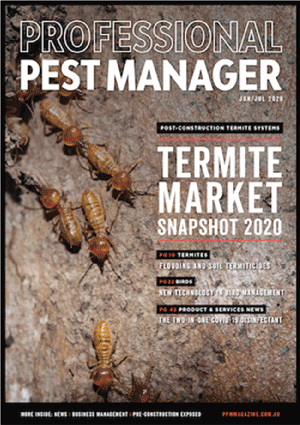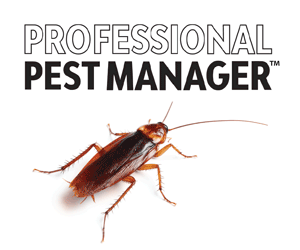The year 2025 sees Rentokil celebrating its 100 year anniversary. Here, we share the remarkable story behind the global brand.
Now celebrating its 100 year anniversary, Rentokil’s business journey has been marked by significant innovations and strategic acquisitions.
The birth of a brand
The story begins with Professor Harold Maxwell-Lefroy, a British entomologist who developed a groundbreaking timber treatment fluid to combat wood-boring beetles in the roof timbers of Westminster Hall in the Houses of Parliament in London. The publicity surrounding the saving of the building and its opening by the king attracted many requests to treat other properties. This prompted him to hire an assistant, Bessie Eades, to help capitalise on the business opportunity.
They named the product Rentokil and registered the name as a trademark, selling under the brand name in 1925. Tragically, Maxwell-Lefroy passed away the same year after accidentally inhaling fumes of insecticides he was testing in his lab before he could witness the full impact of his invention.
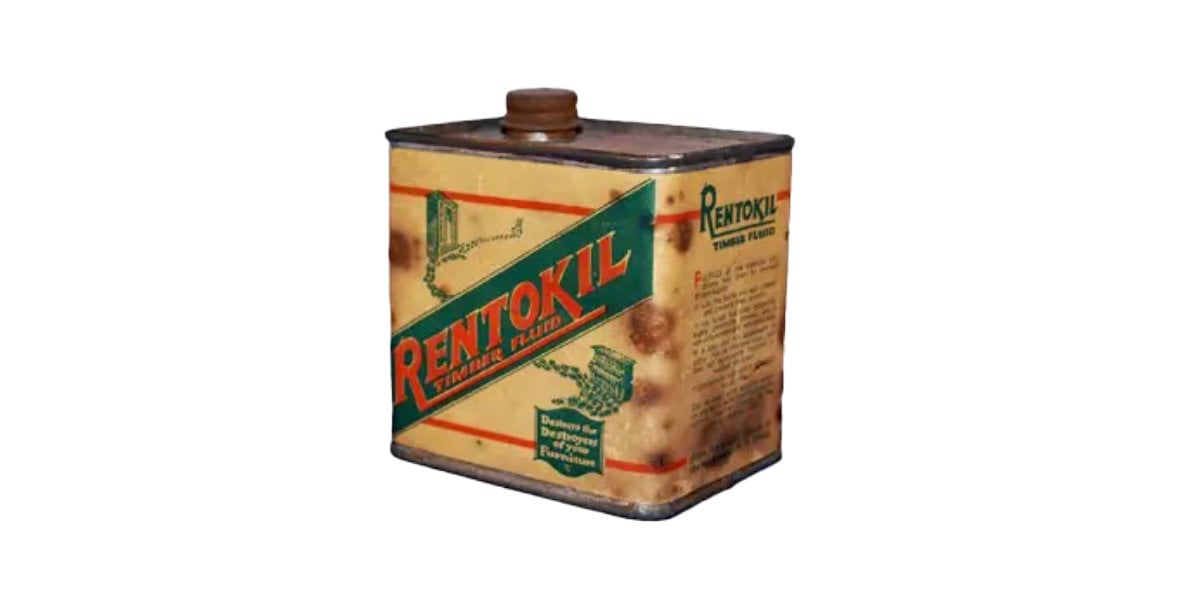
However, his legacy lived on through Bessie Eades, who recognised the timber fluid’s commercial potential. She bought the rights to it from Maxwell-Lefroy’s widow and relaunched the company as Rentokil (Sales) Ltd in 1928 to market the Rentokil Timber Fluid. Eades’s astute decision to sell directly to the public, emphasising the connection to Maxwell-Lefroy, and promote the longlasting effectiveness of the treatment, were crucial factors in the success of the new company.
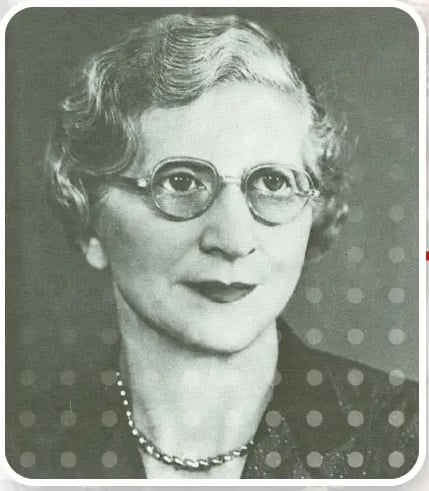
Bessie Eades concentrated on developing new products, which included beetle powder for kitchens, various insect treatments, a moth treatment, furniture cream, and a germicide specifically designed for telephones. The top-selling product was an insecticide initially called Kilit, which later became known as Rentokilit.
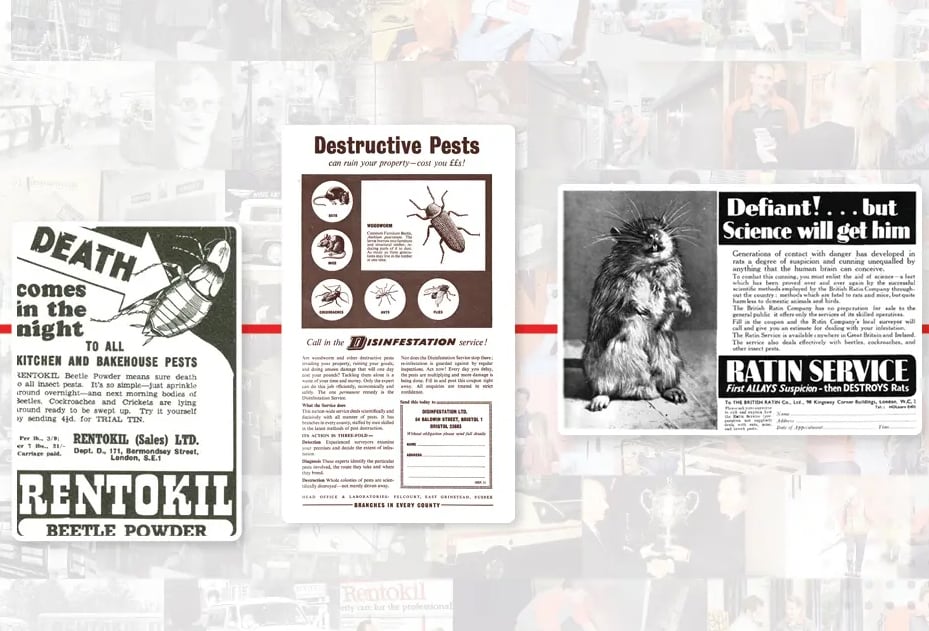
Embracing expertise
In 1944, Bessie Eades recruited Dr Norman Hickin, an entomologist whose expertise in wood-boring beetles, coupled with his talent for public speaking and technical writing, played a crucial role in building the Rentokil brand.
Hickin’s efforts to educate the public about woodworm infestations opened a significant growth area for the business. He invented an applicator to inject timber fluid into the holes made by adult beetles when they leave the timber to mate. This invention was patented in 1948 and sold over a million by the 1950s.
Expanding horizons
In 1957, Rentokil joined forces with a Danish competitor, British Ratin. This strategic move brought together two industry leaders and in December 1960, the new era of Rentokil was born.
Under the new Rentokil Group banner, the company embarked on a period of rapid growth and diversification. In 1961, Rentokil made a significant acquisition by purchasing the 61-year-old Scottish company Thomas Harley Ltd. This added Thomas Harley’s proprietary rat poison, Rodine, and a moth repellent to Rentokil’s product offerings. The Rodine brand of rodent control products is still in use today, but with a modern formulation.
Global expansion
Acquisitions have always played an important role in Rentokil’s growth, expanding its global presence into new countries and increasing market share.
The 1960s saw the new Rentokil expand internationally with its first acquisition in Kenya, followed by 21 countries in Europe, Australasia, Southeast Asia, the Caribbean, and South Africa. The global expansion continued in the 1970s, with a franchising model in ten countries and acquisitions in nine countries including, for the first time, several businesses in the US, the largest pest control market.
Entering the Australian market
Rentokil first arrived in Australia in 1965 through the acquisition of Powell’s Pest Control, with the Rentokil brand officially being launched in Australia in 1975. The company has strengthened its market leadership across Australia and New Zealand through strategic acquisitions, partnering with respected local businesses to preserve their legacy while driving future growth. A few notable acquisitions in the recent past include Geelong Pest Control, Suburban Pest Management, Allstate Pest Control and WR Gay.
Rentokil has a deep understanding of Australian businesses and their unique pest control challenges. Its approach goes beyond ownership, ensuring smooth integration with transparent valuation and strong employee engagement, while focusing on developing local talent and leadership to support long-term success across the country.
Continued product innovation
Some pest managers may be unaware that Rentokil has, since the beginning, continued to invest in product research and development. Its Global Research and Development Centre was opened in the UK in 2017, with facilities to study pest behaviour and develop and test new products. This was followed in 2024 by the opening of the Rentokil Terminix Innovation Center in Dallas Texas, with scientists specialising in areas such as termites, mosquito management and residential pest control.
All research and development incorporates sustainability into products as a core factor. This includes finding alternatives to pesticides, developing more energy-efficient products such as the Lumnia insect light trap (using UV LED), increasing the use of recycled plastic, and developing PestConnect, a digital pest control system that optimises treatments and reduces pesticide use.
Looking ahead: innovation, sustainability and M&A strategy
Andrew Stone, managing director of Rentokil Initial Pacific, says the business will continue to be future-focused. “Rentokil is committed to leading the industry through innovation, digitisation, and sustainable pest management,” he said. “Our Intelligent Defence approach leverages IoT-driven technology, data-led insights, and environmentally responsible practices to deliver more advanced, safer, and more efficient pest control.
“In Australia and New Zealand, our strategy includes a continued focus on acquisitions, enabling us to partner with reputable, like-minded businesses, safeguarding their legacy while providing access to our global expertise and resources. Pest managers can expect continued investment in advanced solutions such as PestConnect, rodent and bird proofing, and low-toxicity products that are reshaping the future of pest control in this region.”
Starting from humble beginnings in the 1920s, driven by the vision and dedication of one woman over three decades, the company has become the world’s largest pest control provider – and looks set to continue to grow.

